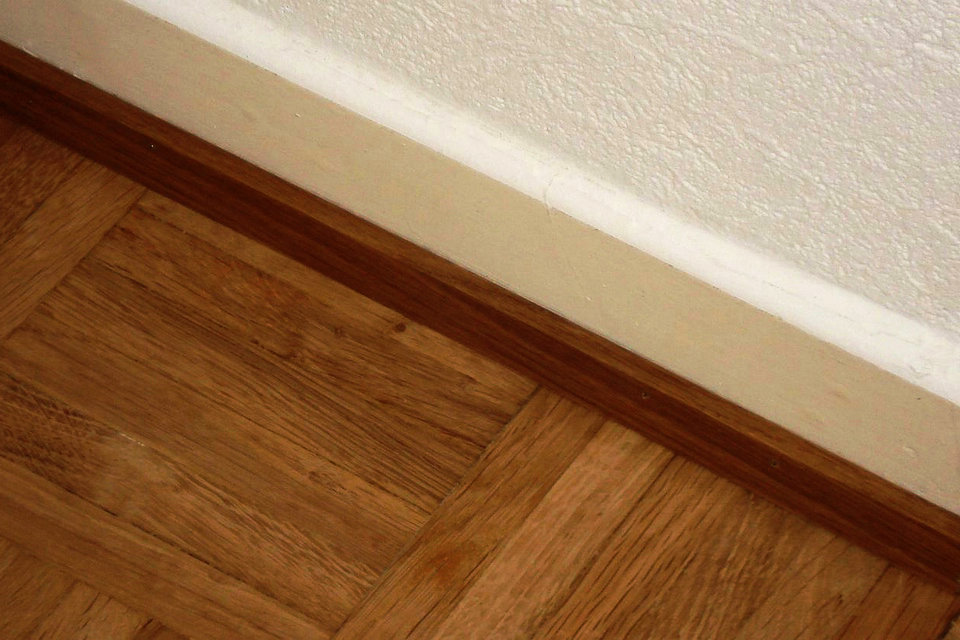Baseboard


In architecture, a baseboard (also called skirting board, skirting, mopboard, floor molding, or base molding) is a usually wooden board covering the lowest part of an interior wall. Its purpose is to cover the joint between the wall surface and the floor.
It covers the uneven edge of flooring next to the wall; protects the wall from kicks, abrasion, and furniture; and can serve as a decorative molding.
At its simplest, baseboard consists of a simple plank nailed, screwed or glued to the wall; however, particularly in older houses, it can be made up of a number of mouldings for decoration.
Plastic baseboard comes in various plastic compounds, the most common of which is UPVC. It is usually available in white or a flexible version in several colors and is usually glued to the wall. Vinyl baseboard is glued with adhesive and can be difficult to remove or to replace. It has a long lifespan, which can mean lower maintenance.
Wooden baseboard can be available in untreated, lacquered or prepainted versions. Prepainted baseboards can be made from a single piece or finger jointed wood, often softwoods, while hardwoods are either lacquered, or raw for staining and made from a single piece of wood.
Radiators are sometimes installed inside or in front of baseboards (baseboard radiators). These radiators rely on hot water as their heat source. Electric heating is also used in this manner.
A baseboard differs from a wainscot; a wainscot typically covers from the floor to around 1-1.5m high (waist or chest height), whereas a baseboard is typically under 0.2m high (ankle height).
Function
The baseboard plays important functions:
Junction, to cover the irregular border, which inevitably occurs between the junction of the pavement and the wall.
Protective, to protect the wall from kicks and abrasion; it also prevents furniture from going in direct contact with the wall.
Decorative, that is as a complementary decoration to the frames.
Description
In its simplest form, the skirting board consists of a flat table, but may have more rounded or elaborate shapes, this is mainly applied to walls, but also to doors.
This can be fixed to the wall in different ways:
Nailed, the nails to be applied or the nail gun or a hammer are used
Screwed, an uncommon solution, where screws are used that can be screwed directly to the wall or to the wall plugs
Glued, a glue is used to fix this element
It can be made of various materials:
Wood, material in which the first models were made
Plastic, material used on some recent models
Country variations
Baseboards / skirting boards generally have typical variations depending on the country. For example, in China the baseboards are usually very low in height, are made of plastic or redwood, and have a very simple or unprofiled design. In contrast, in the UK there are a vast number of profiles available. These profiles are frequently named after the period when they were developed, such as Victorian or Edwardian.
Source From Wikipedia